
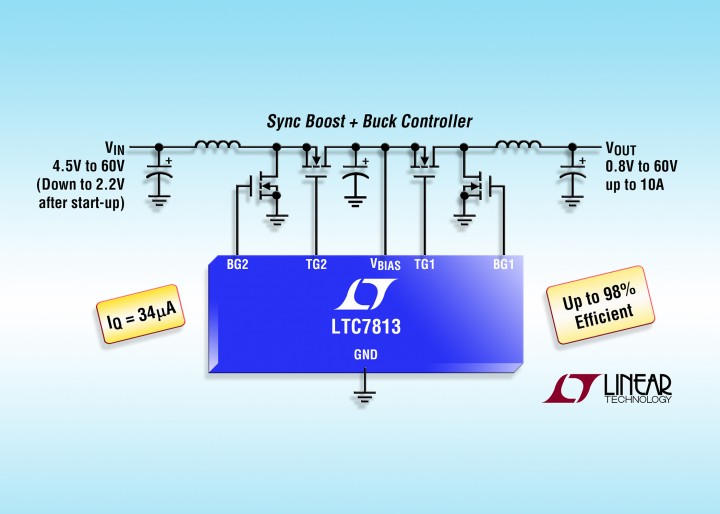
Linear Technology Corporation introduces the LTC7813, a dual output (boost + buck), low quiescent current synchronous DC/DC controller. When cascaded, its independent step-up (boost) and step-down (buck) controllers regulate the output voltage from an input voltage that can be above, below, or equal to the output voltage, including during an automotive load dump or cold crank. Unlike conventional single inductor buck-boost regulators, the LTC7813’s cascaded boost + buck solution provides fast transient response with continuous, non-pulsating input and output currents. It substantially reduces ripple voltage and EMI, ideal for automotive, industrial and high power battery operated systems.
LTC7813 – Low IQ, 60V Synchronous Boost+Buck Controller – [Link]

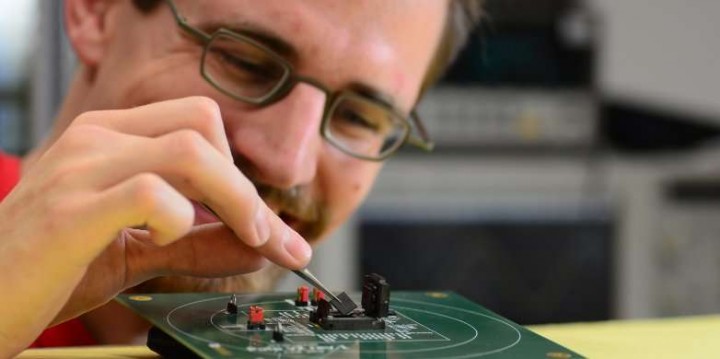
Fabio Bergamin @ phys.org writes about PULPino which is an open source processor to be used on wearables and IoT.
In future, it will be easier and cheaper for developers at universities and SMEs to build wearable microelectronic devices and chips for the internet of things, thanks to the PULPino open-source processor, which has been developed at ETH Zurich and the University of Bologna.
Open-source microprocessor – [Link]

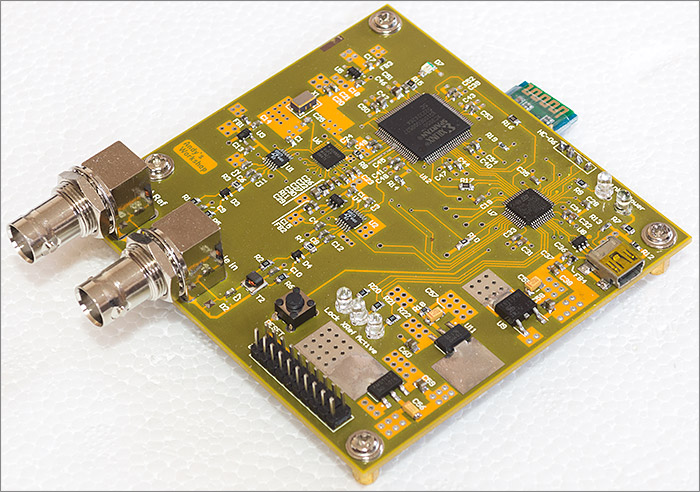
Andy published his accurate and open source frequency counter that uses an Android phone as a display. It’s based on a high accuracy temperature compensated crystal oscillator (TCXO) fed into a phase locked loop (PLL) to create a high frequency reference clock. The reference clock along with the input signal is processed by a Xilinx FPGA and a STM32F072 mcu is reading the data.
Here we have a good example of how a requirement for a simple tool spirals out of control and spawns a project that takes months to complete and ends up dwarfing the project that it was originally expected to facilitate. You see, some time ago I was fiddling around with a project, something to do with data logging, probably, I’ve actually forgotten what I was up to.
Nanocounter: Frequency Counter with an Android Interface – [Link]

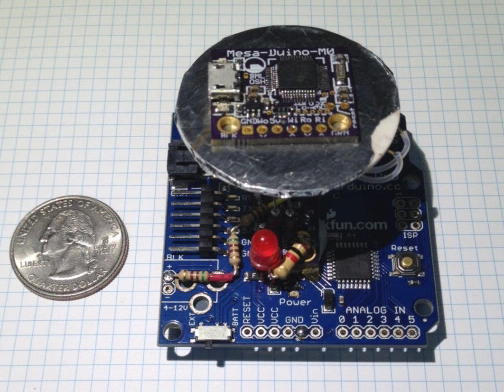
This is a small hot-plate for SMT reflow soldering build upon an Arduino Pro and controlled using PWM and high side power MOSFETs.
Black Mesa Labs has been using a $20 hot plate for a year now for soldering QFN ICs to PCBs. Only issue so far has been the size ( 10″x10″x3″ ) and thermal mass of the thing as it consumes precious microscope work area and unfortunately stays quite hot for 30+ minutes after a quick 4 minute reflow job. BML boards are mostly 1″x1″, so a 800W hot plate with a 6″ diameter heating surface is overkill for most jobs.
1″ 100W Hot-Plate for SMT Reflow – [Link]

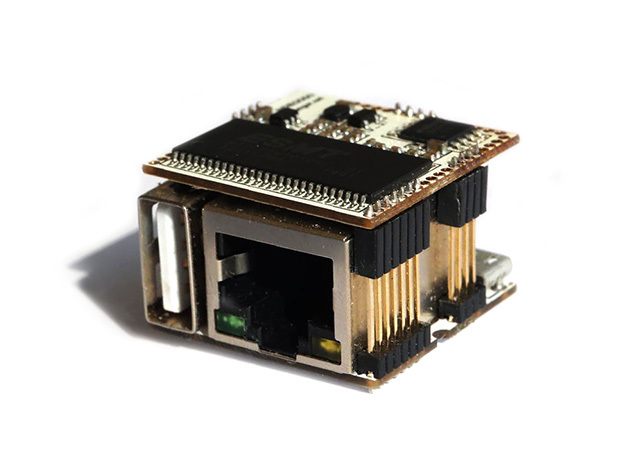
VoCore is an open source hardware that runs OpenWRT Linux. This tiny computer comes with Wi-Fi, USB, 20+ GPIOs that will help you to embed it on your projects.
With each passing day, mini computer boards are getting more and more popular. Single board computers like Raspberry Pi, CHIP, OrangePi etc. are being endorsed by makers and DIY enthusiasts to create new innovations. However, if you are looking for an even smaller Linux computer, VoCore is the perfect device for you.
VoCore: A Cheap And Coin-sized Linux Computer With Wi-Fi – [Link]

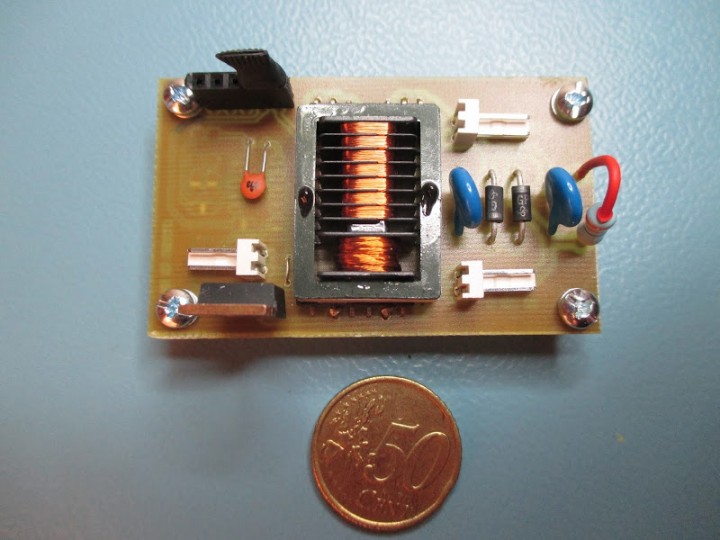
Bob tipped us with his latest project, it’s a 9V to 1kV DC-DC converter using CD4011 IC to produce a square wave and a IRF530 transistor to drive the transformer.
Finally, I have made a new high voltage supply based on an inverter transformer and voltage doubler. It seems to be ok for this job, but it can be used in various other applications so I’m presenting it in a separate entry.
Warning! the device produces high voltage that can be lethal, if you want to build it, please take cautions.
9V to 1kV DC/DC converter – [Link]
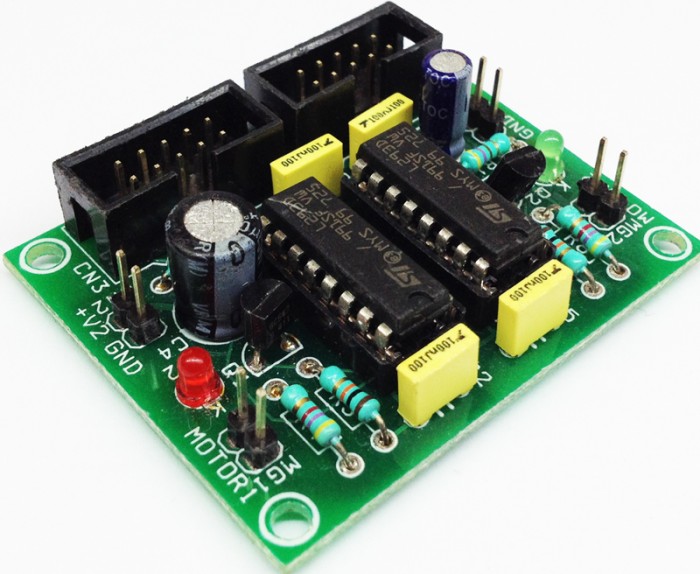
Dual DC Motor driver using two L293D IC. The L293D device is quadruple high-current half-H driver. The 293D is designed to provide bidirectional drive current up to 600mA a voltage from 5V to 36V. It provides 600mA +600mA on each channel suitable for mini hobby robots. The board been designed mainly for small size robot, however this can be used for other application where two motor control required. L293D includes the output clamping diodes for protections. Each channel required two input signals PWM and DIR for full control. Separate logic supply to reduce dissipation.
Specifications
- Motor/Logic supply 5 to 36 V
- Logic controls input 7 VDC max
- Inhibit facility/enable
- PWM Frequency 5KHz Maximum
- High Noise immunity
- Over temperature protection
- Capable of delivering output current up to 600 mA per channel
- The control/interface lines are accessible with Berg connector
- Header connector for motor and supply connection
Dual DC Motor driver using two L293D – [Link]


Dual DC Motor driver using two L293D IC. The L293D device is quadruple high-current half-H driver. The 293D is designed to provide bidirectional drive current up to 600mA a voltage from 5V to 36V. It provides 600mA +600mA on each channel suitable for mini hobby robots. The board been designed mainly for small size robot, however this can be used for other application where two motor control required. L293D includes the output clamping diodes for protections. Each channel required two input signals PWM and DIR for full control. Separate logic supply to reduce dissipation.
Specifications
- Motor/Logic supply 5 to 36 V
- Logic controls input 7 VDC max
- Inhibit facility/enable
- PWM Frequency 5KHz Maximum
- High Noise immunity
- Over temperature protection
- Capable of delivering output current up to 600 mA per channel
- The control/interface lines are accessible with Berg connector
- Header connector for motor and supply connection
Schematic
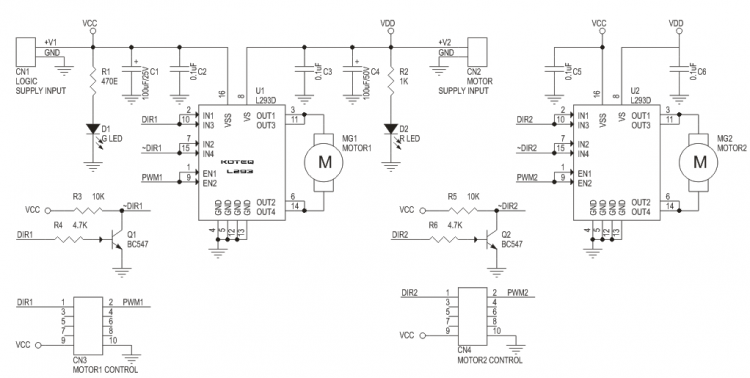
Parts List
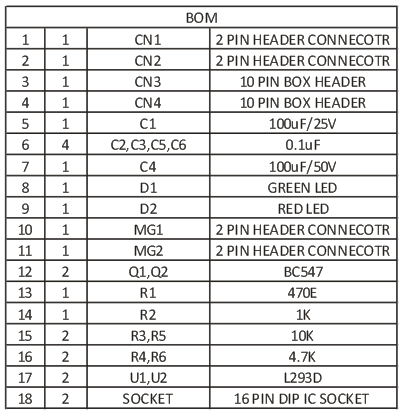
Photo
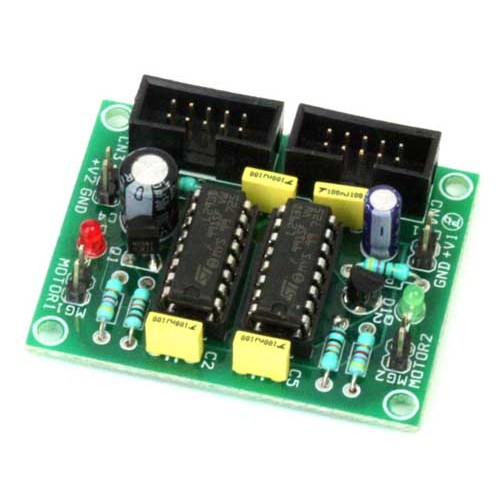

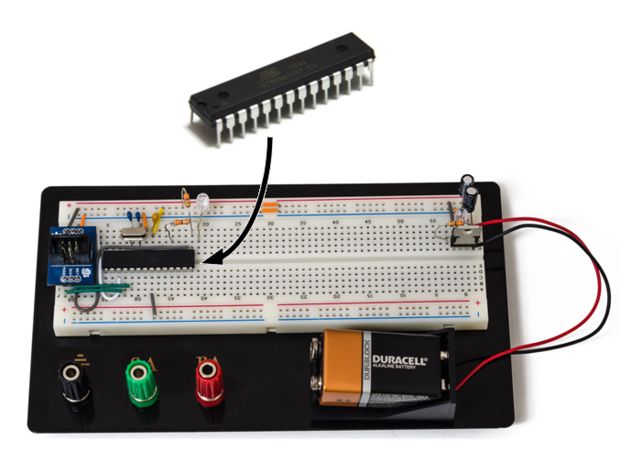
Here is a detailed guide on how to get started with ATMega328P microcontroller. The guide goes in details on how to setup it on a breadboard and how to upload your first code on it. and blink a led.
The real benefit of using this microcontroller is that it’s only $4 US, whereas many other micro-controllers are 10X that price. It can also be easily programmed in the universal programming language, C++. The ATMega is also equipped with a decent amount of memory for any project.
Getting Started With the ATMega328P – [Link]

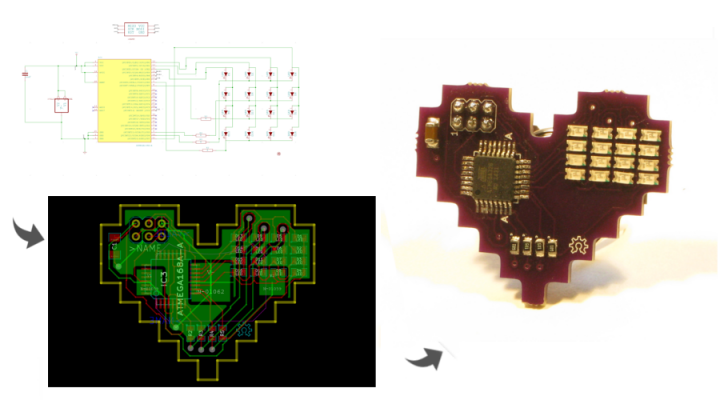
You can find some interesting projects on MeowCAD and one of these is a“8 Bit Heart”. MeowCAD is an online, in-browser electronics design tool that’s completely free and open source. Use it to create schematics, printed circuit boards, share with your friends or just play around.
At some point, after you design your schematics and boards, you want to submit them to be fabricated. Whether you use MeowCAD or some other tool, the workflow is pretty similar. We live in a pretty amazing time where this can be done for reasonable cost with only a few weeks delay.
Build an 8-Bit Heart with MeowCAD – [Link]






















